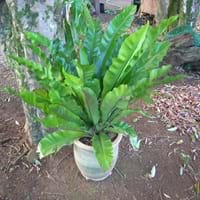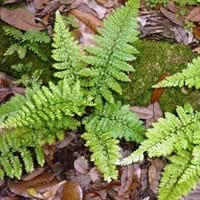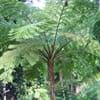Life Span
Perennial
Perennial
Origin
Hawaii, Middle Africa, Southern Asia, Polynesia
North America, Africa
Types
Asplenium trichomanes, Asplenium scolopendrium, Asplenium rutamuraria
Asplenium platyneuron platyneuron, Asplenium platyneuron incisum, Asplenium platyneuron bacculum-rubrum
Habitat
Terrestrial, tropical environments
Moist Soils, Old fields, Sandy areas, Shaded sites
USDA Hardiness Zone
10-11
3-8
Sunset Zone
H2, 23, 24
Not Available
Habit
Upright/Erect
Rosette/Stemless
Flower Color
Not Available
Non Flowering Plant
Flower Color Modifier
Bicolor
Bicolor
Fruit Color
Not Available
Non Fruiting Plant
Leaf Color in Spring
Green, Yellow green
Green
Leaf Color in Summer
Green, Yellow green
Green
Leaf Color in Fall
Green, Yellow green
Green
Leaf Color in Winter
Green, Yellow green
Not Available
Leaf Shape
Narrow
Pinnate
Plant Season
Spring, Summer, Fall, Winter
Spring, Summer, Fall
Sunlight
Bright Indirect Sunlight, Indirect sunlight
Full Shade, Partial shade
Type of Soil
Loam
Loam, Sand
The pH of Soil
Acidic, Neutral
Acidic, Neutral
Soil Drainage
Well drained
Well drained
Bloom Time
Not Available
Not Available
Tolerances
Not Available
Drought, Variety of soil types
Where to Plant?
Container, Ground, Pot
Container, Ground, Pot
How to Plant?
Spores
Spores
Plant Maintenance
Medium
Medium
Watering Requirements
Do Not over Water, Keep ground moist, Reduce watering in winter
Water occasionally
In Summer
Lots of watering
Lots of watering
In Spring
Moderate
Moderate
In Winter
Average Water
Average Water
Soil pH
Acidic, Neutral
Acidic, Neutral
Soil Type
Loam
Loam, Sand
Soil Drainage Capacity
Well drained
Well drained
Sun Exposure
Bright Indirect Sunlight, Indirect sunlight
Full Shade, Partial shade
Pruning
Remove damaged leaves, Remove dead branches, Remove dead leaves, Remove dead or diseased plant parts
Remove damaged leaves, Remove dead branches, Remove dead leaves
Fertilizers
All-Purpose Liquid Fertilizer, Balanced liquid fertilizer, fertilize every 2-3 weeks while growing, fertilize in spring, fertilize in summer, Put diluted fertilizers
All-Purpose Liquid Fertilizer, Balanced liquid fertilizer, fertilize every 2-3 weeks while growing, fertilize in spring, fertilize in summer, Put diluted fertilizers
Pests and Diseases
Red blotch
Scale
Plant Tolerance
Drought
Drought, Variety of soil types
Flower Petal Number
Single
Single
Foliage Texture
Coarse
Medium
Foliage Sheen
Glossy
Glossy
Attracts
Hummingbirds
Not Available
Allergy
Toxic
Not Available
Aesthetic Uses
Showy Purposes
Not Used For Aesthetic Purpose
Beauty Benefits
Not Available
Not Available
Environmental Uses
Air purification, Indoor Air Purification
Air purification
Medicinal Uses
General weakness in children, Mouth Sores
General weakness in children, Mouth Sores, Not Available
Part of Plant Used
Not Available
Not Available
Other Uses
Used as Ornamental plant
Used as Ornamental plant
Used As Indoor Plant
Yes
No
Used As Outdoor Plant
Yes
Yes
Garden Design
Container, Feature Plant, Hanging Basket, Houseplant, Rock Garden, Wall, Tropical
Foundation, Mixed Border, Rock Garden, Wall
Botanical Name
ASPLENIUM nidus
ASPLENIUM platyneuron
Common Name
Birds Nest Fern, Pakpak-lauin
ebony spleenwort, brownstem spleenwort
In Hindi
घोंसला फ़र्न
पौधा
Ebony Spleenwort
In German
Vogelnest Farn
Pflanze
Ebony Streifenfarn
In French
Nest Fern Bird
Plante
Ebony doradille
In Spanish
Helecho nido de pájaro
Planta
Ebony Spleenwort
In Greek
Φωλιά του Πουλιού Fern
Φυτό
Ebony Spleenwort
In Portuguese
Fern do ninho do pássaro
Plantar
Ebony Spleenwort
In Polish
Ptasie Gniazdo Fern
Roślina
Ebony Spleenwort
In Latin
Bird 's Nest Fern
planta
Clear Spleenwort
Phylum
Pteridophyta
Pteridophyta
Class
Filicopsida
Filicopsida
Order
Polypodiales
Polypodiales
Family
Aspleniaceae
Aspleniaceae
Genus
Asplenium
Asplenium
Clade
Not Available
Eupolypods II
Tribe
Not Available
Not Available
Subfamily
Not Available
Not Available
Season and Care of Bird's Nest Fern and Ebony Spleenwort
Season and care of Bird's Nest Fern and Ebony Spleenwort is important to know. While considering everything about Bird's Nest Fern and Ebony Spleenwort Care, growing season is an essential factor. Bird's Nest Fern season is Spring, Summer, Fall and Winter and Ebony Spleenwort season is Spring, Summer, Fall and Winter. The type of soil for Bird's Nest Fern is Loam and for Ebony Spleenwort is Loam, Sand while the PH of soil for Bird's Nest Fern is Acidic, Neutral and for Ebony Spleenwort is Acidic, Neutral.
Bird's Nest Fern and Ebony Spleenwort Physical Information
Bird's Nest Fern and Ebony Spleenwort physical information is very important for comparison. Bird's Nest Fern height is 120.00 cm and width 90.00 cm whereas Ebony Spleenwort height is 15.20 cm and width 15.20 cm. The color specification of Bird's Nest Fern and Ebony Spleenwort are as follows:
Bird's Nest Fern flower color: Not Available
Bird's Nest Fern leaf color: Green and Yellow green
Ebony Spleenwort flower color: Non Flowering Plant
- Ebony Spleenwort leaf color: Green
Care of Bird's Nest Fern and Ebony Spleenwort
Care of Bird's Nest Fern and Ebony Spleenwort include pruning, fertilizers, watering etc. Bird's Nest Fern pruning is done Remove damaged leaves, Remove dead branches, Remove dead leaves and Remove dead or diseased plant parts and Ebony Spleenwort pruning is done Remove damaged leaves, Remove dead branches and Remove dead leaves. In summer Bird's Nest Fern needs Lots of watering and in winter, it needs Average Water. Whereas, in summer Ebony Spleenwort needs Lots of watering and in winter, it needs Average Water.





